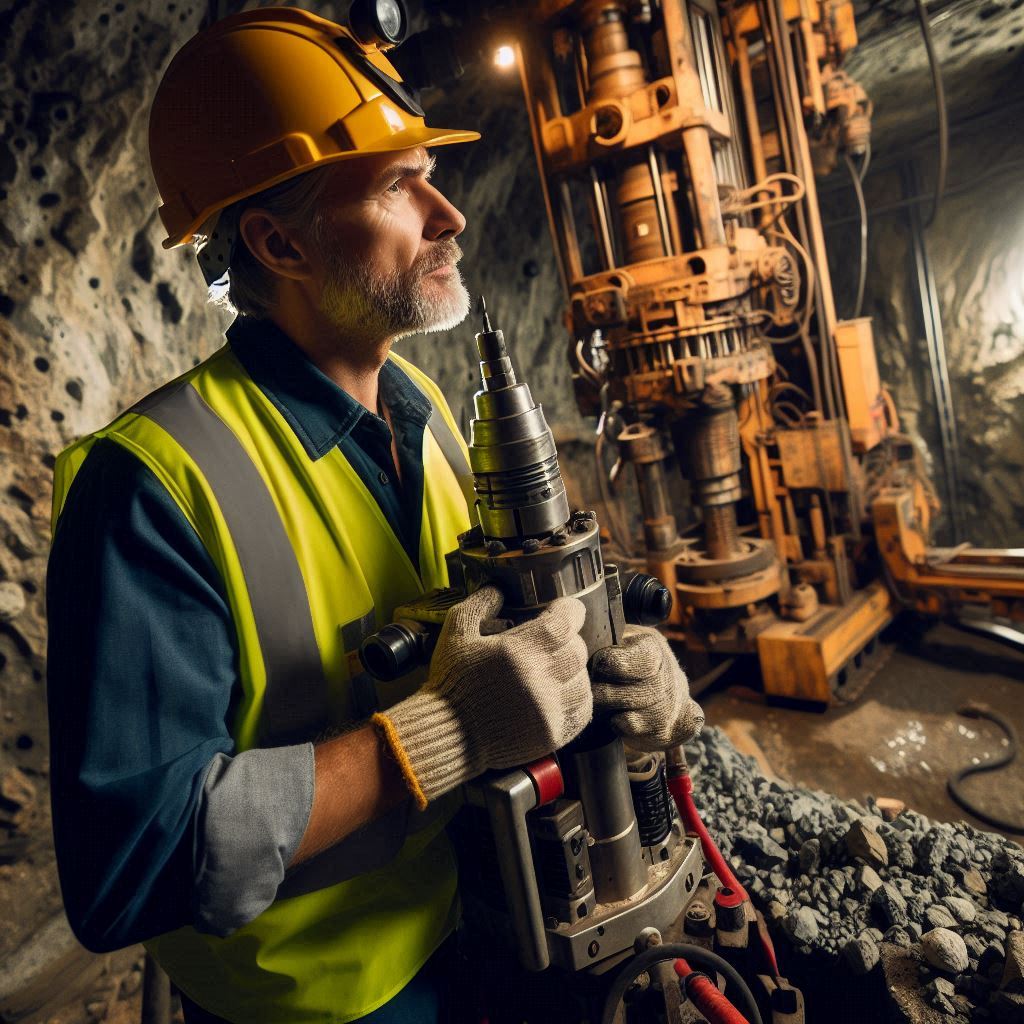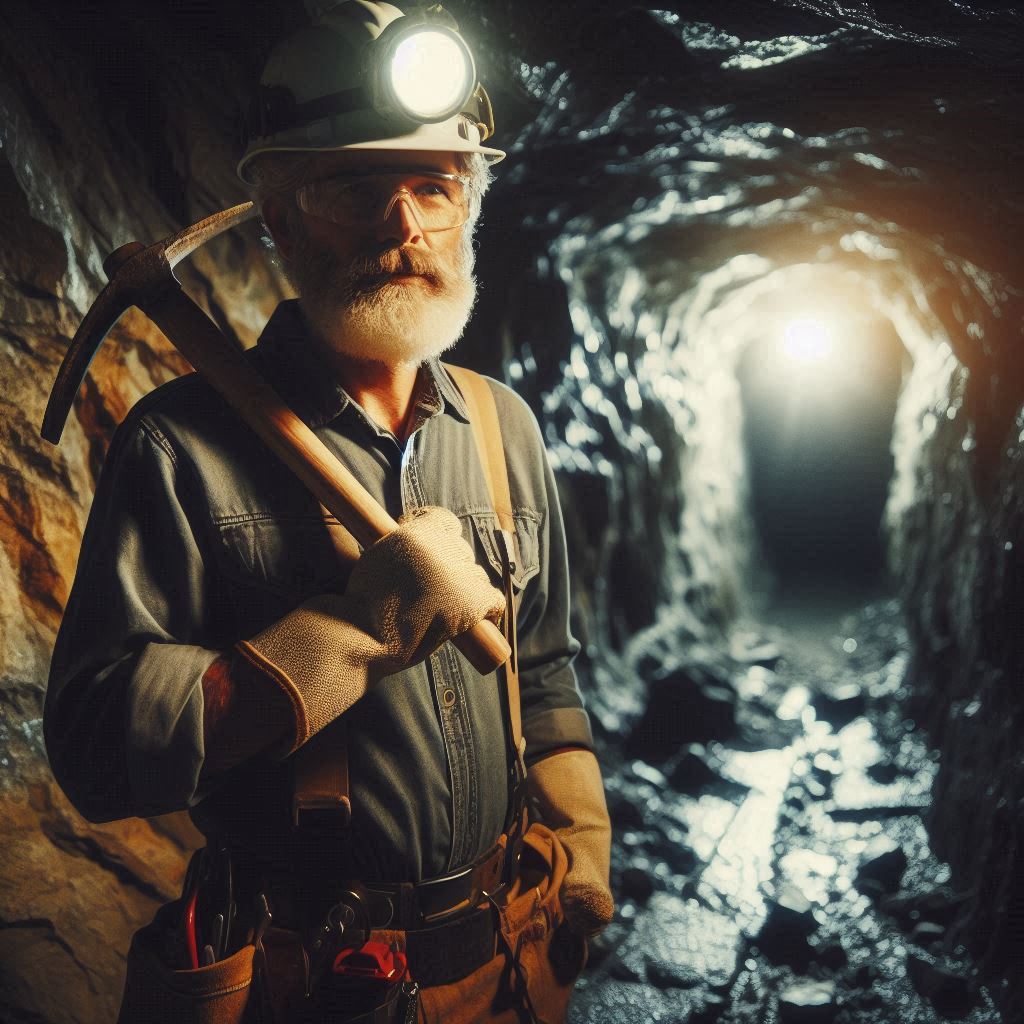Introduction
Technology is revolutionizing mining engineering, transforming how engineers approach their work.
Mining engineering is essential for extracting valuable resources from the Earth.
This field underpins various industries, including construction, energy, and manufacturing.
Engineers design and implement methods to efficiently and safely extract minerals and metals.
Historically, mining engineering relied heavily on manual labor and basic machinery.
However, advances in technology have introduced more sophisticated tools and techniques.
Innovations like automated drilling systems and advanced geological mapping have enhanced productivity and safety.
These technological strides are reshaping the landscape of mining engineering jobs.
The mining industry‘s role is crucial in providing raw materials needed for everyday products and infrastructure.
From metals used in electronics to minerals required for renewable energy technologies, mining is a backbone of modern economies.
As technology progresses, the demand for skilled mining engineers grows, highlighting the importance of staying current with technological trends.
Modern mining engineers now work with high-tech equipment and software that improve efficiency and reduce risks.
Remote sensing, machine learning, and robotics are just a few examples of technologies transforming the field.
These advancements not only increase the precision of mining operations but also contribute to more sustainable practices.
In summary, technology is profoundly impacting mining engineering jobs, driving innovation and reshaping industry practices.
Understanding this impact is vital for engineers who aim to stay relevant and excel in this evolving field.
Advancements in Mining Technology
How Technological Advancements Have Revolutionized the Mining Industry
Technological advancements have revolutionized the mining industry in profound ways.
Innovations have transformed traditional mining practices, leading to more efficient and safer operations.
Modern technologies have reshaped how mining tasks are performed, enhancing productivity and operational safety.
The Impact of Automation, Artificial Intelligence, and Robotics on Mining Operations
Automation has streamlined mining processes significantly.
Automated systems now control drilling, blasting, and ore transport, increasing productivity while reducing human error.
Autonomous trucks and drills operate continuously, optimizing resource extraction and minimizing downtime.
Artificial intelligence (AI) further enhances operations by analyzing data to predict equipment failures and optimize performance.
Predictive maintenance powered by AI helps prevent costly breakdowns and improves safety.
AI also assists in geological surveys by accurately interpreting complex data sets.
Robotics play a crucial role by performing tasks in hazardous environments, reducing human exposure to risks.
Robotic systems handle dangerous materials and execute precise operations, enhancing safety and efficiency.
Examples of Specific Technological Tools and Equipment Used in Modern Mining Practices
Several specific technological tools and equipment are integral to modern mining.
Drones provide aerial surveys of mining sites, offering detailed topographical data for planning and monitoring.
Advanced sensor technology monitors equipment conditions in real-time, allowing immediate adjustments and preventive measures.
Remotely operated vehicles (ROVs) are used in underwater mining, exploring deep-sea environments and collecting samples without risking human lives.
Advanced GPS and mapping technologies ensure precise navigation and resource management.
Read: Exploring Subfields of Aerospace Engineering
Changes in Job Requirements
How technological advancements have changed the skillset required for mining engineering jobs
As technology continues to advance at a rapid pace, the mining engineering sector is experiencing a transformation in job requirements like never before.
In the past, mining engineers were primarily focused on traditional methods of extracting resources from the earth, but now, they must possess a diverse range of technical skills to thrive in the industry.
One of the most noticeable changes in job requirements is the shift towards automation and digitalization.
Mining companies are increasingly leveraging cutting-edge technologies such as autonomous vehicles, drones, and real-time data analytics to improve efficiency and safety in mining operations.
As a result, mining engineers are now expected to be proficient in operating and maintaining these advanced tools and equipment.
Need for Continuous Learning and Adaptation
It is no longer sufficient for mining engineers to rely solely on their traditional engineering knowledge.
They must be willing to adapt to new technologies and undergo training to enhance their skills continually.
This adaptability is not only essential for individual career development but also for the overall competitiveness of mining companies.
By staying abreast of the latest technological trends in the industry, mining engineers can position themselves as valuable assets to their employers and secure more opportunities for career advancement.
Continuous learning also allows professionals to future-proof their careers and remain adaptable in the face of evolving job requirements.
Implications on the Job Market and Workforce Dynamics
As the skillset needed for mining engineering jobs evolves, the job market is likely to experience a shift in the demand for skilled professionals.
Companies that prioritize investing in training and upskilling their workforce will have a competitive edge by attracting top talent and fostering a culture of innovation.
On the other hand, mining engineers who are resistant to learning new technologies may find themselves at a disadvantage in the job market.
Traditional roles in mining engineering may undergo significant changes or be replaced by new job titles that reflect the industry’s increasing reliance on technology-driven solutions.
One of the most significant impacts of technology on mining engineering jobs is the increased efficiency and productivity in mining operations.
Read: How Agricultural Engineers Improve Crop Yields
Increased Efficiency and Productivity
Analyze how technology has improved efficiency and productivity in mining operations
Advanced technology such as automation, drones, and AI have revolutionized mining processes, allowing for faster and more accurate data collection.
The use of software systems for planning and scheduling has streamlined operations, reducing downtime and maximizing output.
Improved communication and collaboration tools enable real-time monitoring of equipment and resources, leading to proactive maintenance and better decision-making.
The benefits of using advanced technology in terms of cost-effectiveness and safety measures
By utilizing advanced technology, mining companies can optimize their resources, minimize waste, and lower production costs.
The implementation of autonomous vehicles and robotics in mining operations reduces the risk of accidents, improving overall safety standards.
Remote monitoring and control systems allow for the management of operations from a safe distance, reducing exposure to hazardous conditions.
Statistics or case studies to demonstrate the positive impact of technology on mining engineering jobs
According to a report by McKinsey, mining companies that have adopted digital technologies have seen a 10-15% increase in productivity.
Case studies have shown that the use of drones for surveying and mapping can reduce surveying time by up to 90%, saving both time and costs.
Statistics from the International Council on Mining and Metals indicate that the use of automation has decreased mining fatalities by 37% over the past decade.
Transform Your Career Today
Unlock a personalized career strategy that drives real results. Get tailored advice and a roadmap designed just for you.
Start NowRead: Biomedical Engineering: Research and Development

Challenges and Risks
Potential challenges and risks associated with the integration of technology in mining engineering jobs
- Lack of technical expertise to operate new technologies
- Cost of implementing and maintaining advanced equipment
- Potential for cyber threats and data security breaches
- Resistance to change from traditional mining practices
- Inadequate infrastructure for new technological systems.
Concerns about job displacement, job security, and the need for retraining workers
- Automation and AI may lead to fewer job opportunities
- Fear of losing jobs to machines and smart technology
- Uncertainty about the future of traditional mining roles
- Need for continual learning and upskilling to remain employable
The importance of addressing these challenges through proper regulation and workforce development programs
- Regulations to ensure safe integration of technology in mines
- Development programs to train workers on new technologies
- Policies to protect workers from job displacement and insecurity
- Incentives for companies to invest in workforce training and development
Read: The Role of Aerospace Engineers in Satellite Development
Opportunities for Innovation
Explore the Opportunities for Innovation and Growth in the Mining Industry
Technology opens new avenues for innovation and growth in mining.
Emerging technologies create opportunities for more efficient resource extraction and better environmental management.
Innovations in data analytics, remote monitoring, and sustainable practices drive industry advancements and growth.
How Technology Can Drive Sustainable Practices and Environmental Conservation in Mining Operations
Technology drives sustainable practices and environmental conservation in mining.
Advanced technologies enable better waste management, reduced energy consumption, and lower emissions.
Automated systems and AI contribute to more efficient use of resources, minimizing the environmental impact of mining activities.
The Potential for New Job Creation and Career Development in Emerging Fields Like Data Analytics and Remote Monitoring
The rise of technology in mining creates new job opportunities.
Fields like data analytics and remote monitoring are expanding rapidly.
Engineers and analysts can pursue careers focused on optimizing mining operations and ensuring sustainability.
This shift opens doors for career development and specialized roles in the mining industry.
You Might Also Like: Future Outlook for Computer Engineering Careers
Conclusion
Technology has significantly transformed the landscape of mining engineering jobs.
Automation, robotics, and data analytics have revolutionized the way tasks are performed in the mining industry.
By leveraging technological advancements, mining companies can increase efficiency, reduce risks, and improve overall productivity.
However, this shift has also led to a decrease in the demand for traditional mining roles.
It is crucial for mining engineers to adapt to these changes by acquiring new skills and expertise in areas such as artificial intelligence, machine learning, and digitalization.
Keeping pace with technological trends is essential to remain competitive in the job market.
As technology continues to evolve, the future of mining engineering jobs will be heavily influenced by innovation and digital transformation.
It is essential for professionals in the mining industry to stay informed about the latest technological trends and opportunities to remain relevant in this evolving field.
Ultimately, embracing technology is key to shaping the future of mining engineering jobs.
By staying informed and continuously upgrading their skills, professionals can thrive in an industry that is constantly evolving and adapting to technological advancements.




